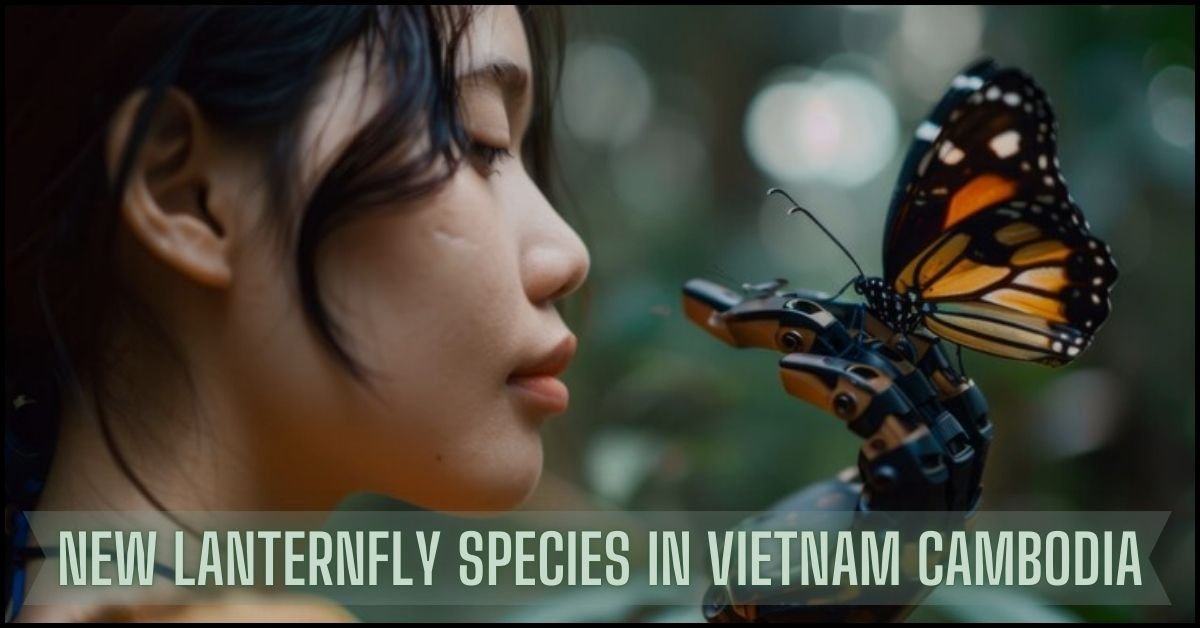In a groundbreaking discovery, scientists have recently identified a new species of lanternfly in the lush forests of Vietnam and Cambodia. This new species has awakened researchers due to its unique characteristics and behavior. Lanternflies are insects known for their vibrant colours and distinctive features, making them a subject of interest for entomologists and environmentalists alike.
This new addition to the lanternfly family has sparked curiosity, not only for its scientific value but also for its potential ecological impact.
Introduction to New Lanternfly Species in Vietnam Cambodia
Before diving into the specifics of this new species, it’s important to understand what makes lanternflies so fascinating. Lanternflies belong to the family Fulgoridae, a group of hemipterans that includes over 2,000 species worldwide. These insects are known for their unique physical appearance, which often includes brightly colored patterns and elongated bodies. The lanternfly’s name comes from its characteristic “lantern” structure on its head, which, although not an actual light source, plays a role in its mating displays.
Ecological Importance of Lanternflies
Lanternflies are not just known for their visual appeal; they also have significant ecological roles. These insects primarily feed on plant sap, which they extract using specialized mouthparts. While this feeding behavior can damage crops, especially in agricultural regions, it also affects the overall health of forest ecosystems by influencing plant populations. Researchers study lanternflies to understand their behavior, migration patterns, and potential effects on local biodiversity better.
Discovery of the New Lanternfly Species
The discovery of a new lanternfly species in Vietnam and Cambodia has excited the global scientific community. This species, unlike any previously known, exhibits a remarkable combination of traits that challenge previous assumptions about lanternfly distribution and diversity. A team of entomologists conducting research in the forests of Southeast Asia first spotted the species. After extensive study and genetic testing, the new species was officially named Fulgora vietnamensis.
Characteristics of the New Species
One of the most striking features of this new lanternfly species is its vibrant coloring. Unlike other lanternflies, Fulgora vietnamensis displays a gradient of colors, ranging from deep purples and blues to bright oranges and yellows. These hues make the insect stand out against the green foliage of its natural habitat. Additionally, the species is slightly larger than other lanternfly species, with wings spanning up to 10 centimeters.
Another notable characteristic of this species is its behavior. While most lanternflies are solitary creatures, Fulgora vietnamensis has been observed in small groups, potentially indicating a shift in their social structure. This discovery raises questions about the evolutionary factors influencing their behaviour and whether this trend will continue in other regions.
The Habitat of the New Lanternfly Species in Vietnam Cambodia
The forests of Vietnam and Cambodia provide an ideal habitat for the new lanternfly species. These dense tropical forests offer a rich environment with various plant species, providing food and shelter for the lanternflies. Fulgora vietnamensis is primarily found in the lowland regions of these countries, where the climate is warm and humid, conducive to the survival of both the insects and the plants they rely on for nourishment.
Ecological Impact
While the Fulgora vietnamensis is not yet considered a threat to local agriculture, its presence in the region could potentially have long-term ecological effects. Introducing new species into an ecosystem can disrupt existing food chains, affecting plant populations and the species that depend on them. Researchers are concerned about the insect’s feeding habits, as lanternflies are known to be particularly damaging to certain crops, such as grapes, mangoes, and citrus fruits.
However, it’s also possible that this new lanternfly species will coexist peacefully within the ecosystem, feeding on plants not of significant agricultural value. The exact impact of Fulgora vietnamensis on local agriculture and plant life remains to be seen.
How the Discovery Was Made
The discovery of Fulgora vietnamensis resulted from a collaborative effort among researchers from several international institutions. A team of entomologists, led by Dr. Nguyen Hoang, was conducting a biodiversity survey in the tropical forests of Southeast Asia. The team was originally focused on cataloguing various insect species when they came across the striking lanternfly. After capturing the specimen, they realized they had encountered something entirely new.
The team then conducted a series of genetic analyses to confirm that the lanternfly was a previously unknown species. These tests revealed that the insect’s genetic makeup was distinct from other lanternflies in the region, confirming its status as a new species. The discovery was published in a leading entomological journal, spreading interest in the scientific community.
The Significance of the Discovery
The discovery of a new lanternfly species in Southeast Asia has several implications for the field of entomology. First, it highlights the importance of continued biodiversity surveys in understudied regions. Vietnam and Cambodia, with their rich natural environments, may still harbour many undiscovered species. This discovery serves as a reminder of how much more there is to learn about the world’s insect populations.
Second, the discovery of Fulgora vietnamensis could have implications for agriculture in the region. While the insect has not yet been shown to have a major impact on crops, its presence could prompt new research into managing potential pest outbreaks. Scientists are studying the insect’s feeding habits and reproductive patterns to understand how it might affect local farming.
FAQs About the New Lanternfly Species in Vietnam Cambodia
What makes Fulgora vietnamensis different from other lanternflies?
Fulgora vietnamensis stands out due to its striking colour gradient, which includes purples, blues, oranges, and yellows. Additionally, it is larger than other lanternfly species, with wings spanning up to 10 centimeters. Its behavior also differs, as it has been observed in small groups, unlike other lanternflies that are typically solitary.
Where was the new lanternfly species discovered?
The new lanternfly species was discovered in the tropical forests of Vietnam and Cambodia, specifically in their lowland regions.
What are the potential ecological impacts of this discovery?
The potential ecological impact of Fulgora vietnamensis on local ecosystems is still being studied. Lanternflies feed on plant sap, which can affect the health of trees and crops. While the species has not been shown to pose a significant threat to agriculture, further research will determine its long-term effects on the environment.
Could this new species threaten local agriculture?
While Fulgora vietnamensis has not yet been observed causing significant damage to crops, its feeding behavior could potentially pose a risk to agricultural plants in the future. Researchers closely monitor the species to assess its impact on local farming practices.
How was the new species identified?
The new lanternfly species was identified through field observations and genetic testing. After capturing the specimen, scientists analyzed its genetic makeup and found it was distinct from other known lanternfly species, confirming its status as a new species.
How does the discovery contribute to scientific research?
The discovery of Fulgora vietnamensis contributes to our understanding of Southeast Asian biodiversity. It underscores the importance of studying understudied regions and highlights the need for continued research into the diverse insect populations in tropical forests.
Conclusion
The discovery of the new lanternfly species in Vietnam and Cambodia has captivated the scientific community and the public. As researchers continue to study Fulgora vietnamensis, they will gain valuable insights into the ecology of Southeast Asia’s tropical forests and the role lanternflies play in these ecosystems. While the full impact of this discovery remains to be seen, it serves as a reminder of the incredible biodiversity in the world’s most remote and unexplored regions. With ongoing research, this new species could open up new avenues for scientific discovery and environmental conservation.

Zoe Rae is a dynamic writer at SpinUpBusiness.com, where she covers a broad range of topics from business strategies to lifestyle, technology, and more. With a keen eye for detail and a passion for making complex ideas simple, Zoe crafts content that informs, engages, and inspires her readers.



